Results 1 to 10 of 15
Thread: W. Greaves Acier Fondu
-
11-27-2017, 12:00 AM #1
 W. Greaves Acier Fondu
W. Greaves Acier Fondu
An early Wm. Greaves. Possibly pre-1800. A small thin wedge at just 5/8 at its widest. The pitting near the toe on the show face side, near the heel on the back face and both sides of the tang was quite deep. The blade is thin tapering from .180 at the toe to .095 where the tang joins the blade and just .040 at the stub tail. The blade is very light in the hand. There was just not enough metal in this blade to remove all the pitting without the loss of blade width. Some light pitting remains in those areas. The blade is restored in a glazed finish which I believe it originally had. The original scales were copied in honey horn with a lead wedge, Austin Kennedy's steel domed collars and brass pins.
In disassembling the razor I found the pivot pin was steel which I think was a replacement. The rear pin was brass. The wedge had 2 steel pins under the collar that did not penetrate the wedge. 3 extra holes in the lead wedge itself. I have seen this arrangement on other early razors. I recently read a thread here by Voidmonster stating this is not seen on razors after 1805.
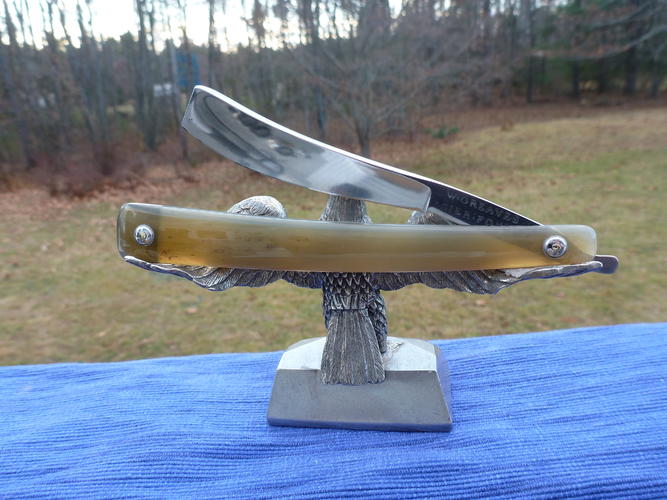
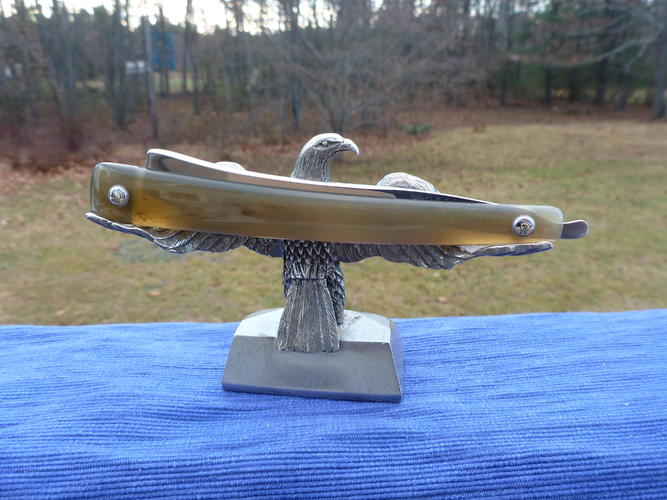
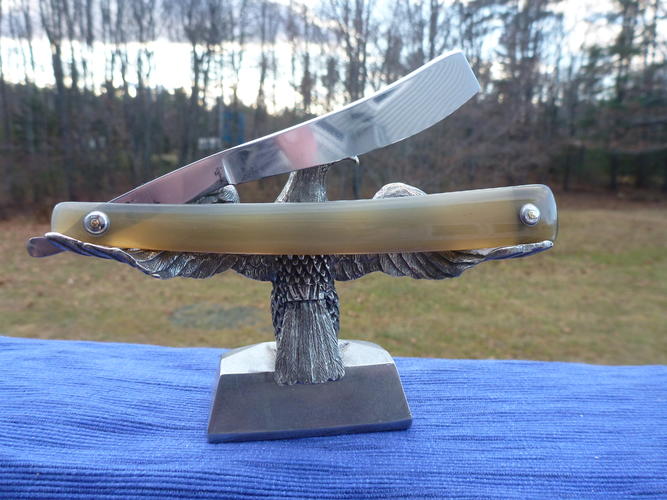
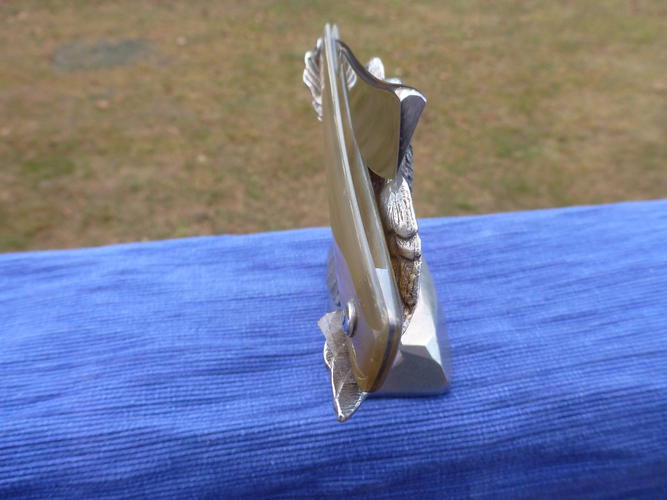
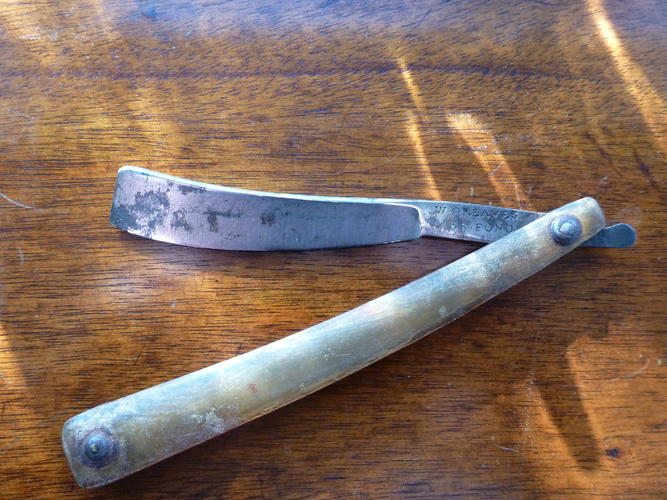
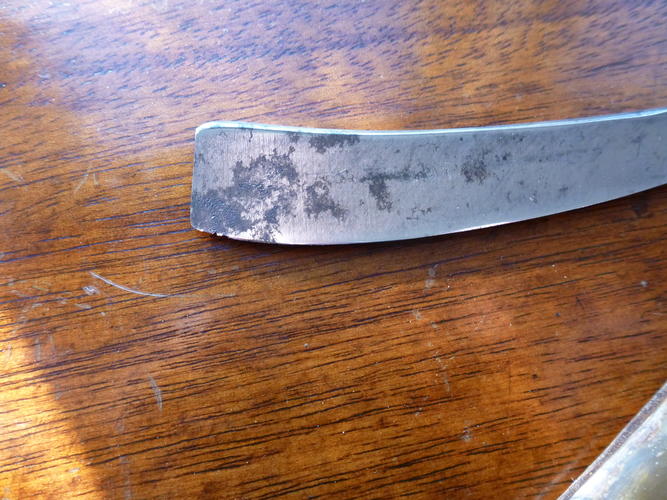
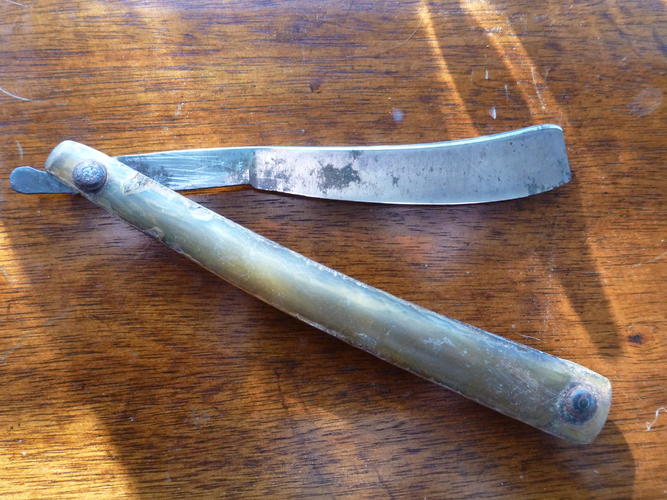
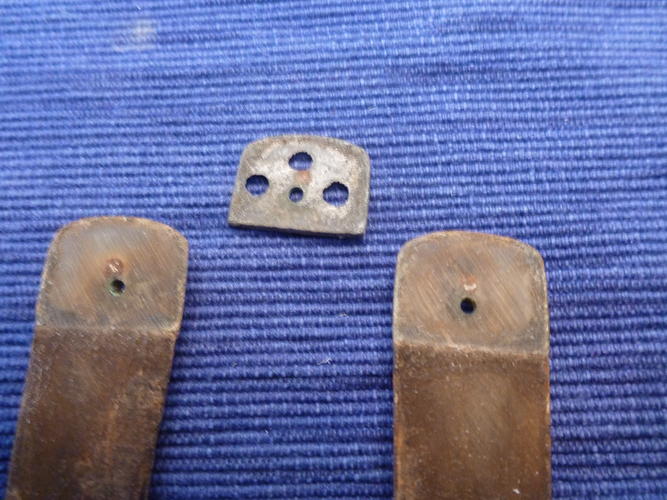
-
The Following 7 Users Say Thank You to karlej For This Useful Post:
782sirbrian (11-28-2017), Dieseld (11-27-2017), Geezer (11-27-2017), Hirlau (11-27-2017), MisterClean (11-27-2017), MrZ (11-29-2017), sharptonn (11-27-2017)
-
11-27-2017, 12:09 AM #2
-
11-27-2017, 12:21 AM #3

That blade has got some great curves.
It's just Sharpening, right?
Jerry...
-
11-27-2017, 01:17 AM #4

I had my eye on that one a couple weeks back. Glad to see that it went to a good home. I believe you’ve done a much better restoration then I would have done. It’s very nice to see such an old blade brought back to life. Great job Karlej!
B.J.
-
11-27-2017, 01:20 AM #5

As usual, a great restoration Karl
 Look sharp and smell nice for the ladies.~~~Benz
Look sharp and smell nice for the ladies.~~~Benz
Imperfection is beauty, madness is genius and it's better to be absolutely ridiculous than absolutely boring ― Marilyn Monroe
-
11-27-2017, 01:27 AM #6

Beautiful job, beautiful razor.
Freddie
-
11-28-2017, 02:05 PM #7Senior Member



- Join Date
- Feb 2015
- Location
- Duluth, GA - Atlanta OTP North
- Posts
- 2,546
- Blog Entries
- 1
Thanked: 315
Nice work! Interesting blade shape. Is that common on the older stubtail? Probably wrong, but some of the stubtail look like they are more difficult to hone.
Did you use buffing compound for the blade? What did you finish it with? And the scales? Too many questions???
Came out really well. Pitting aside, I doubt it looked that nice new.
I really like that eagle. Wouldn't mind having one of those.
-
11-28-2017, 02:24 PM #8

Very nicely done!
Richard
-
11-28-2017, 03:41 PM #9

As with Zak (Voidmonster, with whom I talk with frequently), we have been somewhat perplexed by these. The holes don't seem to correlate with the additional pins (which are all original). The holes generally come in threes and seem to be part of the casting and not drilling, and yes seem to be mostly from razors before 1805 or 1810 or so. I have also seen the additional pins on French razors (nearly broke a pair of scales because I didn't know it was there tucked underneath the collar) in sets of one or two, generally. I'm assuming they're there to prevent the wedge from rotating, but don't know why they fell out of favor (or were there in the first place, considering a good tight wedge just doesn't move much).
-
11-28-2017, 04:28 PM #10

With a wedge of lead, could the three holes in the wedge be simply for weight reduction?


 41Likes
41Likes LinkBack URL
LinkBack URL About LinkBacks
About LinkBacks







 Reply With Quote
Reply With Quote

